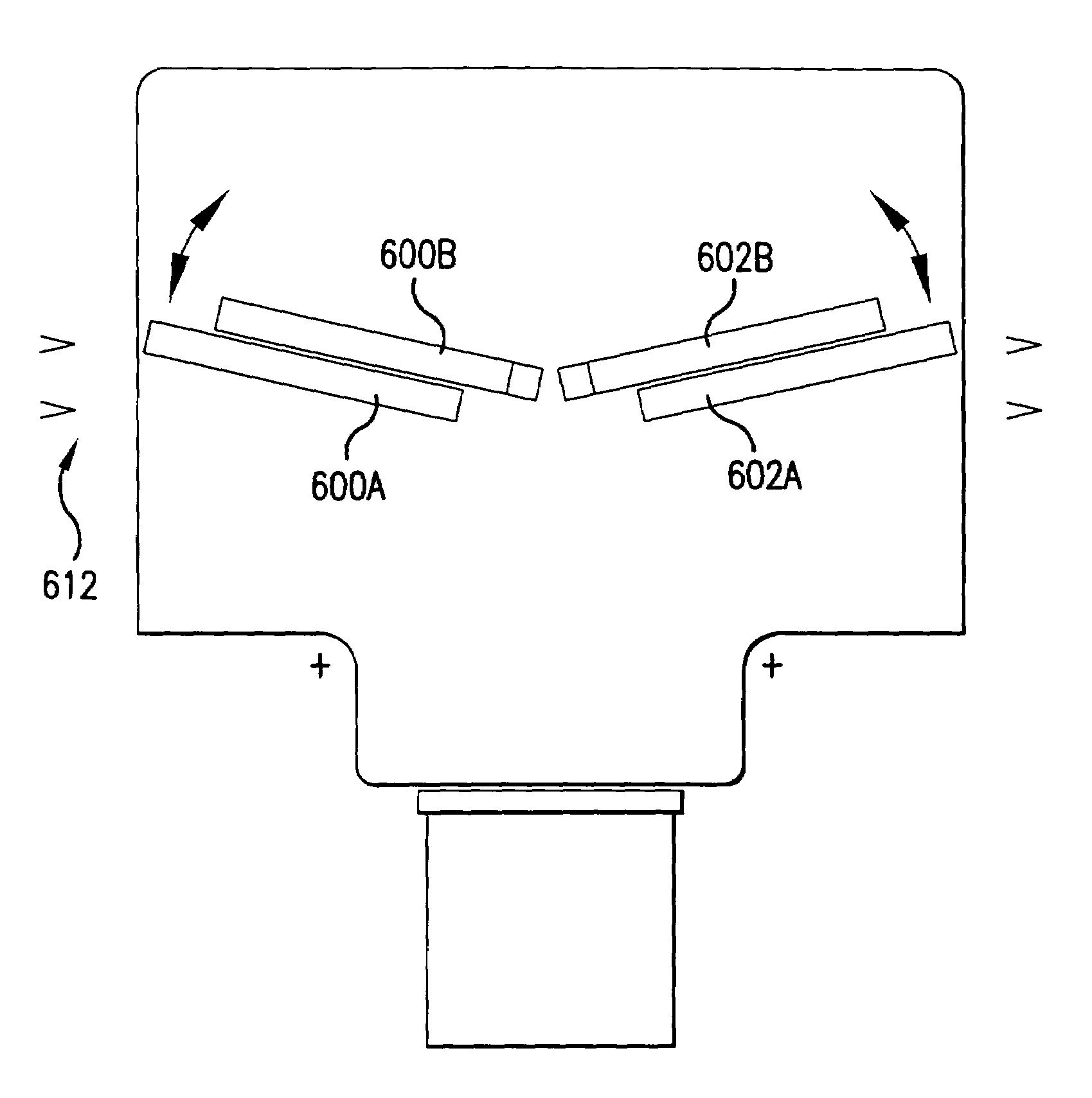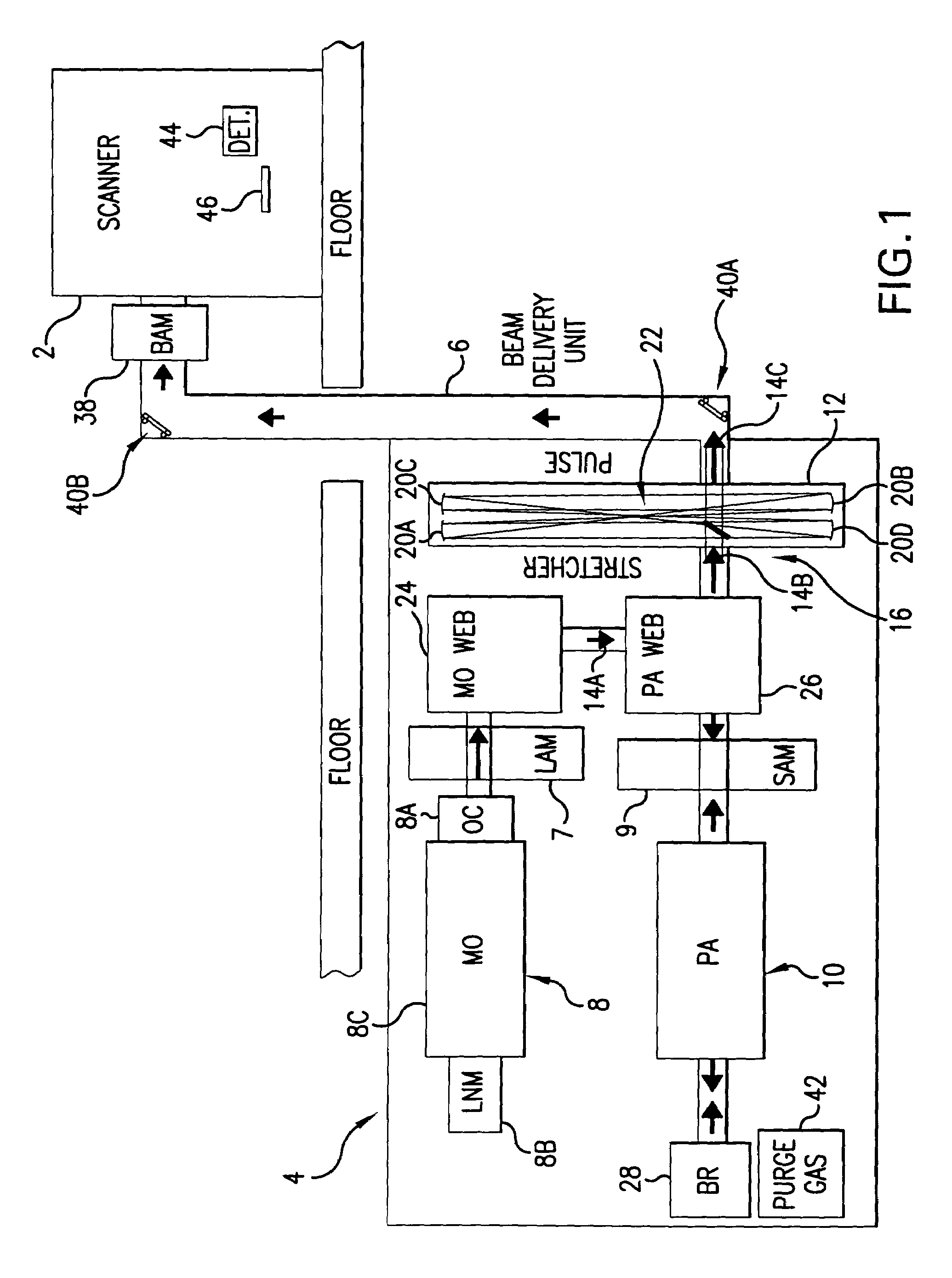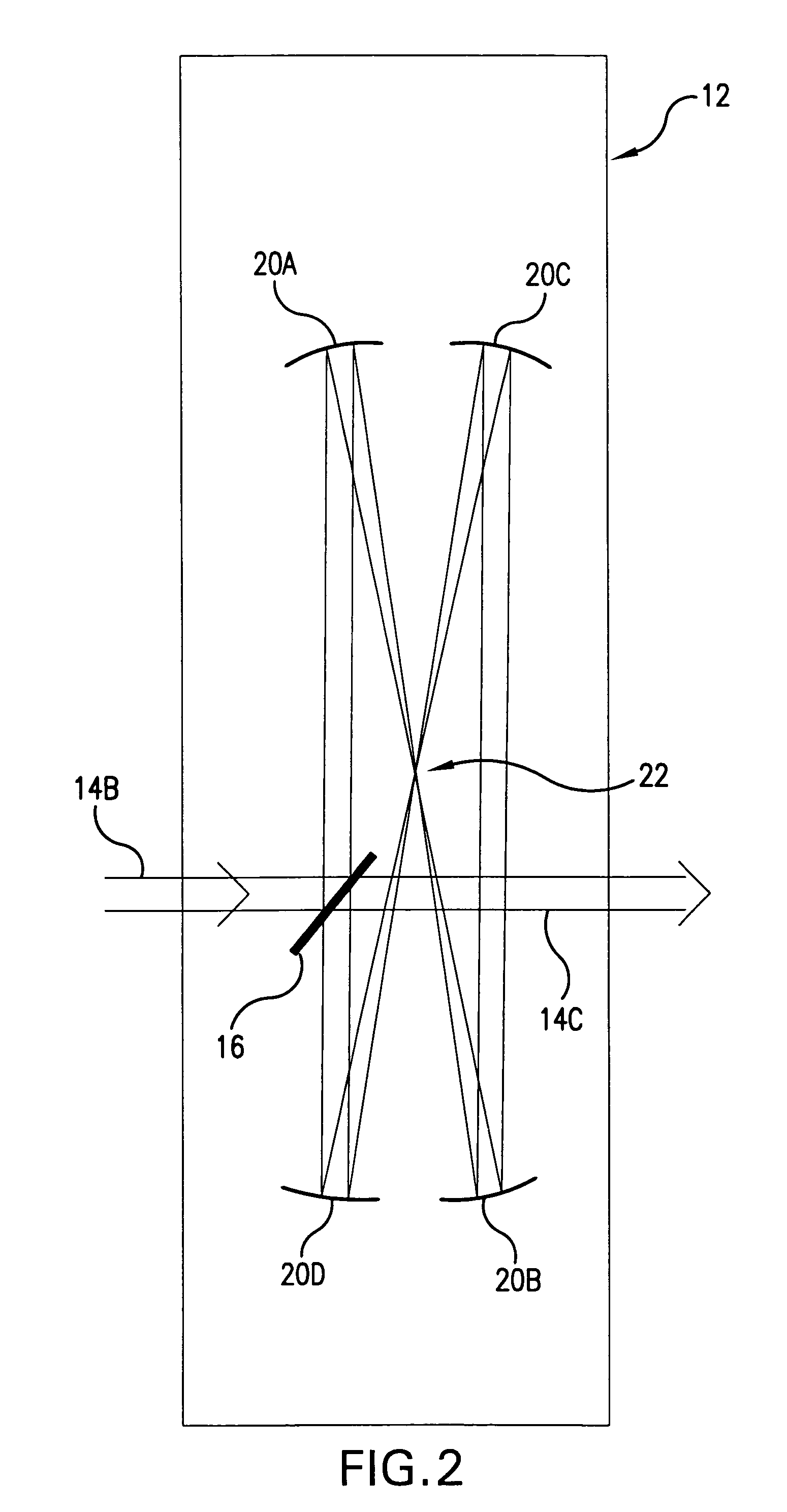Lithography laser with beam delivery and beam pointing control
a beam pointing control and laser technology, applied in the field of lithography lasers with beam pointing control, can solve the problems of large and complex laser systems composed of two separate systems, large and complex to build and operate, and limited commercial application of these two chamber laser systems. the effect of increasing the number of laser beams
- Summary
- Abstract
- Description
- Claims
- Application Information
AI Technical Summary
Benefits of technology
Problems solved by technology
Method used
Image
Examples
first preferred embodiment
[0034]A first preferred embodiment of the present invention is shown in FIG. 1. In this embodiment a 193 nm ultraviolet laser beam is provided at the input port of a scanner lithography machine 2 such as the one of those supplied by Canon or Nikon with facilities in Japan or ASML with facilities in the Netherlands. In this case the main components of the laser system 4 are installed below the deck on which the scanner is installed. This preferred embodiment includes a MOPA laser system with special relay optics, a pulse stretcher and a beam delivery unit 6 which provides an enclosed beam path for delivering the laser beam to the input port of the scanner. The beam delivery unit includes equipment for beam attenuation, automatic beam alignment with feedback control and special alignment features for component alignment during installation and maintenance.
Mopa
[0035]This particular laser system includes a master oscillator 8 and a power amplifier 10 and is a type of laser system known ...
PUM
| Property | Measurement | Unit |
|---|---|---|
| charging voltage | aaaaa | aaaaa |
| voltage electrical potential | aaaaa | aaaaa |
| wavelengths | aaaaa | aaaaa |
Abstract
Description
Claims
Application Information
 Login to View More
Login to View More - R&D
- Intellectual Property
- Life Sciences
- Materials
- Tech Scout
- Unparalleled Data Quality
- Higher Quality Content
- 60% Fewer Hallucinations
Browse by: Latest US Patents, China's latest patents, Technical Efficacy Thesaurus, Application Domain, Technology Topic, Popular Technical Reports.
© 2025 PatSnap. All rights reserved.Legal|Privacy policy|Modern Slavery Act Transparency Statement|Sitemap|About US| Contact US: help@patsnap.com



